Red Kamala, Indian kamala
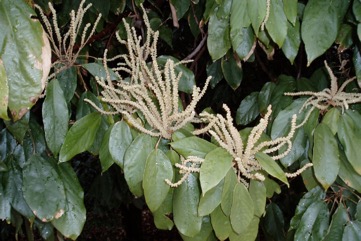
It is a tropical plant. It grows in rainforests. It will grow on a range of soils. It can tolerate moderate frosts. It grows to 1500 m on the edge of the Himalayas. In Borneo it grows up to 1,600 m above sea level. It suits hardiness zones 9-11. Adelaide Botanical Gardens. In XTBG Yunnan. In Sichuan.
Also known as:
Balek angin, Bol-khing-khang, Dieng-chandon, Hpadawng, Hpawng-awn, Isa isanete, Kamala, Kamasi, Kambal, Kamila, Kumila, Mai-hpawng-tun, Monkey face tree, Palannwe, Po-thi-din, Red berry, Rohini, Rohni, Roli, Rora, Ruen, Sindoor, Sindur, Sunduri, Taw-thi-din
Synonyms
- Aconceveibum trinerve Miq.
- Croton coccineus Vahl [Illegitimate]
- Croton distans Wall. [Invalid]
- Croton laurifolius Noronha [Invalid]
- Croton montanus Willd.
- Croton philippensis Lam.
- Croton punctatus Retz. [Illegitimate]
- Echinus philippensis (Lam.) Baill.
- Euonymus hypoleucus H. Lév.
- Macaranga stricta (Rchb.f. & Zoll.) Müll.Arg.
- Mallotus bicarpellatus T. Kuros.
- Mallotus philippensis var. reticulatus (Dunn) F. P. Metcalf
- Mallotus philippensis var. tomentosus Gamble
- Mallotus philippinensis var. reticulatus (Dunn) F. P. Metcalf
- Mallotus reticulatus Dunn
- Mappa stricta Rchb.f. & Zoll.
- Rottlera affinis Hassk.
- Rottlera aurantiaca Hook. & Arn.
- Rottlera philippensis (Lam.) Scheff.
- Rottlera tinctoria Roxb.
- Rottlera tinctoria var. monstruosa Ham. ex Dillwyn
- Tanarius strictus (Rchb.f. & Zoll.) Kuntze
Edible Portion
- Fruit, Root ?, Seeds
Where does Red Kamala grow?
Found in: Afghanistan, Asia, Australia, Bangladesh, Bhutan, Cambodia, China, East Timor, Hawaii, Himalayas, India, Indochina, Indonesia, Japan, Laos, Malaysia, Myanmar, Nepal, Northeastern India, Pacific, Pakistan, Papua New Guinea, PNG, Philippines, SE Asia, Sikkim, Sri Lanka, Taiwan, Thailand, Timor-Leste, Vietnam, Yemen
Notes: The capsule yields a red dye and the fruit have been used as a tapeworm remedy. It is used in medicine. It has anticancer properties. There are about 140 Mallotus species. They grow in the tropics.
Growing Red Kamala, Indian kamala
Cultivation: Plants can be grown from fresh seed. The seed are washed and then sown. They can take several months to germinate. They can also be grown from hardened young cuttings.
Edible Uses: The unripe fruit are cooked as a vegetable. The fruit are powdered and mixed in curries. The seeds are cooked and eaten.
Production: In Australia, fruit are ripe September to February. In NE India August to May.
Nutrition Info
per 100g edible portion| Edible Part | Energy (kcal) | Protein (g) | Iron (mg) | Vitamin A (ug) | Vitamin c (mg) | Zinc (mg) | % Water |
|---|---|---|---|---|---|---|---|
| - | - | - | - | - | - |
Red Kamala, Indian kamala Photos

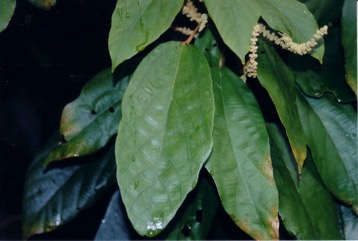
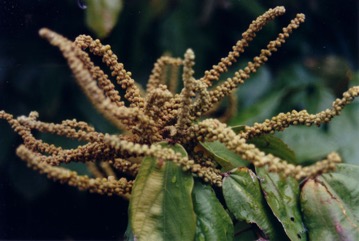
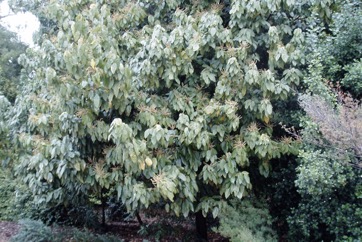
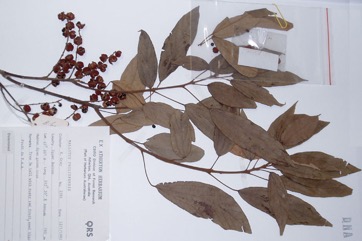
References
Anon., 2003, Native Plants for the Fitzroy basin. Society for Growing Australian Plants Inc. (Rockhampton Branch) p 64
Bodkin, F., 1991, Encyclopedia Botanica. Cornstalk publishing, p 669
Bole, P.V., & Yaghani, Y., 1985, Field Guide to the Common Trees of India. OUP p 67
Borrell, O.W., 1989, An Annotated Checklist of the Flora of Kairiru Island, New Guinea. Marcellin College, Victoria Australia. p 78
Burkill, I.H., 1966, A Dictionary of the Economic Products of the Malay Peninsula. Ministry of Agriculture and Cooperatives, Kuala Lumpur, Malaysia. Vol 2 (I-Z) p 1419
Calvert, G., 2010, The Burdekin Delta Tree Guide. Lower Burdekin Landcare Association., Inc., Ayr p 119
Cooper, W. and Cooper, W., 2004, Fruits of the Australian Tropical Rainforest. Nokomis Editions, Victoria, Australia. p 190
Cowie, I, 2006, A Survey of Flora and vegetation of the proposed Jaco-Tutuala-Lore National Park. Timor-Lests (East Timor) www.territorystories.nt/gov.au p 47
Cronin, L., 1989, The Concise Australian Flora. Reed. p 142
Cundall, P., (ed.), 2004, Gardening Australia: flora: the gardener's bible. ABC Books. p 858
Elliot, W.R., & Jones, D.L., 1993, Encyclopedia of Australian Plants suitable for cultivation. Vol 6. Lothian. p 299 (Photo)
Etherington, K., & Imwold, D., (Eds), 2001, Botanica's Trees & Shrubs. The illustrated A-Z of over 8500 trees and shrubs. Random House, Australia. p 460
Flora of Pakistan. www.eFloras.org
Hani Medicine of Xishuangbanna, 1999, p 279
Hibbert, M., 2002, The Aussie Plant Finder 2002, Florilegium. p 189
http://palaeoworks.anu.edu.au/Nuno_PhD/04.pdf
Jackes, B.R., 2001, Plants of the Tropics. Rainforest to Heath. An Identification Guide. James Cook University. p 53
Jeeva, S., 2009, Horticultural potential of wild edible fruits used by the Khasi tribes of Meghalaya. Journal or Horticulture and Forestry Vol. 1(9) pp. 182-192
Jones D, L, 1986, Ornamental Rainforest Plants in Australia, Reed Books, p 186
Kahlon, L. K. & Singh, R., 2019, Traditional knowledge & Dynamics of edible plants of primitive tribal group ‘Paudi Bhuyan’ with changing demography migration patterns in Northern Odisha. Indian Journal of Traditional Knowledge Vol 18(1), pp 7-15
Kintzios, S. E., 2006, Terrestrial Plant-Derived Anticancer Agents and Plant Species Used in Anticancer research. Critical Reviews in Plant Sciences. 25: pp 79-113
Krishen P., 2006, Trees of Delhi, A Field Guide. DK Books. p 121
Lazarides, M. & Hince, B., 1993, Handbook of Economic Plants of Australia, CSIRO. p 157
Linnaea 34:196. 1865
Maikhuri, R, K, and Gangwar, A. K., 1993, Ethnobiological Notes on the Khasi and Garo Tribes of Meghalaya, Northeast India, Economic Botany, Vol. 47, No. 4, pp. 345-357
Melzer, R. & Plumb, J., 2011, Plants of Capricornia. Belgamba, Rockhampton. p 129
Nicholson, N & H., 1996, Australian Rainforest Plants, Terania Rainforest Publishing. NSW. p 45
Pandey, K. C. & Pande, N., 2016, Ethnobotanical Documentation of Wild Edible Plants used by Gujjar Community of Tarai West Forest Division Ramnagar, Nainital, India, Current World Environment. Vol. 11(3), 808-818
Peekel, P.G., 1984, (Translation E.E.Henty), Flora of the Bismarck Archipelago for Naturalists, Division of Botany, Lae, PNG. p 301, 300
Sarma, H., et al, 2010, Updated Estimates of Wild Edible and Threatened Plants of Assam: A Meta-analysis. International Journal of Botany 6(4): 414-423
Sawian, J. T., et al, 2007, Wild edible plants of Meghalaya, North-east India. Natural Product Radiance Vol. 6(5): p 419
Slik, F., www.asianplant.net
Sukarya, D. G., (Ed.) 2013, 3,500 Plant Species of the Botanic Gardens of Indonesia. LIPI p 377
Sundriyal, M. & Sundriyal, R. C., 2004, Structure, Phenology, Fruit Yield, and Future Prospects of some Prominent Wild Edible Plant Species of the Sikkim Himalaya, India. Journal of Ethnobiology 24(1): 113-138
Suwardi, A. B., et al, 2020, Ethnobotany and conservation of indigenous edible fruit plants in South Aceh, Indonesia. Biodiversitas Vol. 21, No. 5, pp 1850-1860
Wild edible plants of Himachal Pradesh
Williams, J.B., Harden, G.J., and McDonald, W.J.F., 1984, Trees and shrubs in rainforests of New South Wales and Southern Queensland. Univ. of New England, Armidale. p 88
World Checklist of Useful Plant Species 2020. Royal Botanic Gardens, Kew
www.worldagroforestrycentre.org/treedb/